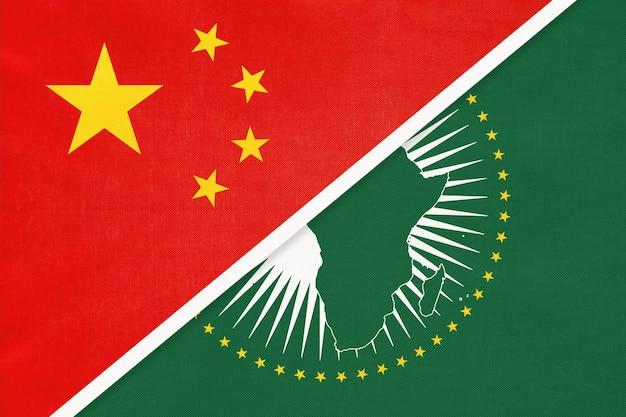Introduction
China’s extraordinary journey from a low-tech manufacturer to a global leader in technology has become one of the most significant development stories of the modern era. Just a few decades ago, “Made in China” was associated with cheap, low-quality goods. Today, China dominates in artificial intelligence, telecommunications, green technology, and digital platforms. Its companies compete at the global frontier, its cities are laboratories for smart technologies, and its universities are producing cutting-edge research.
This transformation did not occur by chance. It was the product of deliberate policies, long-term planning, heavy investment in infrastructure and education, and an appetite for experimentation. For African countries striving to grow their technological capacity, China’s experience offers rich lessons—lessons that can help the continent leapfrog traditional industrial development stages and become an active participant in the global digital economy.
China’s Early Years: Reform, Openness, and Learning
The foundation of China’s technological rise was laid in the late 1970s when Deng Xiaoping launched a series of reforms to open up the country to the global market. Special Economic Zones (SEZs) were created in places like Shenzhen to attract foreign investment and test economic liberalization. These zones became laboratories for industrial and technological development. Foreign companies were incentivized to form joint ventures with local Chinese firms, bringing not just capital but also technology, management expertise, and access to global markets.
During this period, China did not focus on being innovative in the traditional sense. Instead, it adopted a strategy of copying, adapting, and improving existing technologies. This approach enabled rapid learning and laid the groundwork for the more advanced innovation ecosystem that would follow. Importantly, the Chinese government was not just a passive observer. It steered development through industrial policies, subsidies, and protectionist measures aimed at nurturing domestic firms.
Strategic Upgrading: Indigenous Innovation and Global Reach
By the early 2000s, China began shifting from being merely a manufacturing hub to a nation focused on indigenous innovation. This transition was marked by substantial increases in research and development (R&D) spending. The government launched national programs to support science and technology, and universities such as Tsinghua and institutions like the Chinese Academy of Sciences began producing world-class research.
During this period, Chinese firms started acquiring foreign companies to accelerate technology acquisition. Huawei, Lenovo, and Haier are examples of companies that expanded globally while deepening their domestic capabilities. Policies such as the “Go Out” strategy encouraged companies to invest abroad, acquire technology, and enter new markets.
The growth of China’s tech giants such as Alibaba, Tencent, Baidu, and Huawei was not accidental. These companies were nurtured through favorable regulation, state backing, and protection from international competition during their formative years. The government also invested heavily in building the physical and digital infrastructure necessary for these companies to thrive.
A Global Technology Leader Emerges
The announcement of the “Made in China 2025” strategy signaled China’s ambition to become a global leader in high-tech industries such as robotics, aerospace, new materials, and biotechnology. This was complemented by the “Digital Silk Road,” part of the broader Belt and Road Initiative, which focused on exporting Chinese digital infrastructure, platforms, and governance models to developing countries.
China’s cities, especially Shenzhen, emerged as dynamic hubs of innovation. The government supported innovation through thousands of incubators, science parks, and government-backed venture funds. These environments created a vibrant culture of entrepreneurship and iteration, particularly in hardware development.
At the same time, human capital became a cornerstone of China’s strategy. China invested heavily in education, particularly in science, technology, engineering, and mathematics (STEM). It became the world’s leading producer of engineering graduates and repatriated top global talent through incentive programs. The transformation of its education and research ecosystem ensured a constant pipeline of skilled professionals ready to fuel technological innovation.
How China Did It: Core Drivers of Technological Growth
One of the most important elements of China’s success was its long-term, coordinated policy vision. Development plans spanned decades and were adjusted as needed, with goals set clearly and pursued consistently. This vision was implemented through a synergy between state and market. The government played an active role in directing capital, identifying strategic industries, and creating the conditions for firms to flourish.
Infrastructure development also played a vital role. China built world-class transport systems, energy grids, logistics networks, and broadband connectivity, which laid the foundation for its digital economy. These investments ensured that businesses could operate efficiently and that innovation was not limited to a few urban centers.
Another key driver was the country’s ability to embrace iteration and learning. Chinese firms were encouraged to experiment and evolve, even if their initial products were substandard. This tolerance for failure allowed companies to improve through cycles of feedback, learning, and reinvestment. In hardware hubs like Shenzhen, rapid prototyping and peer learning became a cultural norm.
Lessons for Africa: Opportunity in Adaptation, not Imitation
China’s path is not one that Africa can or should copy wholesale, but it provides important lessons about how developing regions can grow their own technological capacity. The first lesson is the importance of investing in human capital. Without a skilled workforce, no technological transformation is possible. African countries must prioritize education reform, especially in technical and digital skills. Coding schools, technical colleges, and research universities must be scaled up and supported over the long term.
Second, Africa needs to develop innovation ecosystems rather than isolated infrastructure projects. This means building links between universities, research centers, industry, and government. Spaces like Kenya’s iHub and Nigeria’s Yaba tech cluster show early promise, but need consistent support, stable policy environments, and strong integration with national strategies.
Third, African countries should be strategic in their global partnerships. Infrastructure and technology transfer deals with global powers—whether China, the EU, or the US—must include clauses for local training, knowledge sharing, and manufacturing. These deals should support African value addition, not just consumption.
Fourth, governments must think long-term and adopt cross-sector approaches. Technology policy should not sit in a silo; it must be embedded in broader economic, health, agricultural, and education policies. South Africa, with its advanced institutions and industrial base, has the potential to lead in this area if it aligns its innovation strategies with national development goals.
Finally, African governments must create environments where local innovators are encouraged to try, fail, and try again. This means providing access to seed funding, reducing regulatory burdens for start-ups, and promoting a culture of experimentation. Africa’s biggest advantage is its ability to leapfrog traditional technologies—just as it did with mobile banking through M-Pesa.
Signs of Momentum in Africa
There are already encouraging examples across the continent. Kenya’s digital innovation in financial technology is world-renowned. Nigeria has produced unicorns like Flutterwave and Andela despite major infrastructural and policy constraints. South Africa’s academic and scientific community is globally respected, and its tech start-up ecosystem is growing rapidly. Rwanda is investing in AI and digital health infrastructure and positioning itself as a regional tech hub.
These examples suggest that Africa’s technological rise is possible, but uneven and fragile. Without coordination, political will, and strategic investment, these isolated successes may remain the exception rather than the rule.
A Narrow Window for Bold Action
China’s rise to technological prominence was the result of decades of consistent investment, policy innovation, and national determination. It is a story of a country that chose not to wait for perfect conditions, but instead acted with vision, scale, and pragmatism. For Africa, the opportunity is real but time-limited. The world is shifting into a new era defined by digital economies, climate adaptation technologies, and artificial intelligence.
Africa has the talent, the population, and the natural resources to be more than just a consumer of other regions’ technologies. It can be a co-creator and innovator. To do this, African leaders must embrace long-term thinking, foster innovation ecosystems, and build the skills and infrastructure necessary for a digital future. The next chapter of Africa’s development story could very well be written in code—and the time to start is now.



